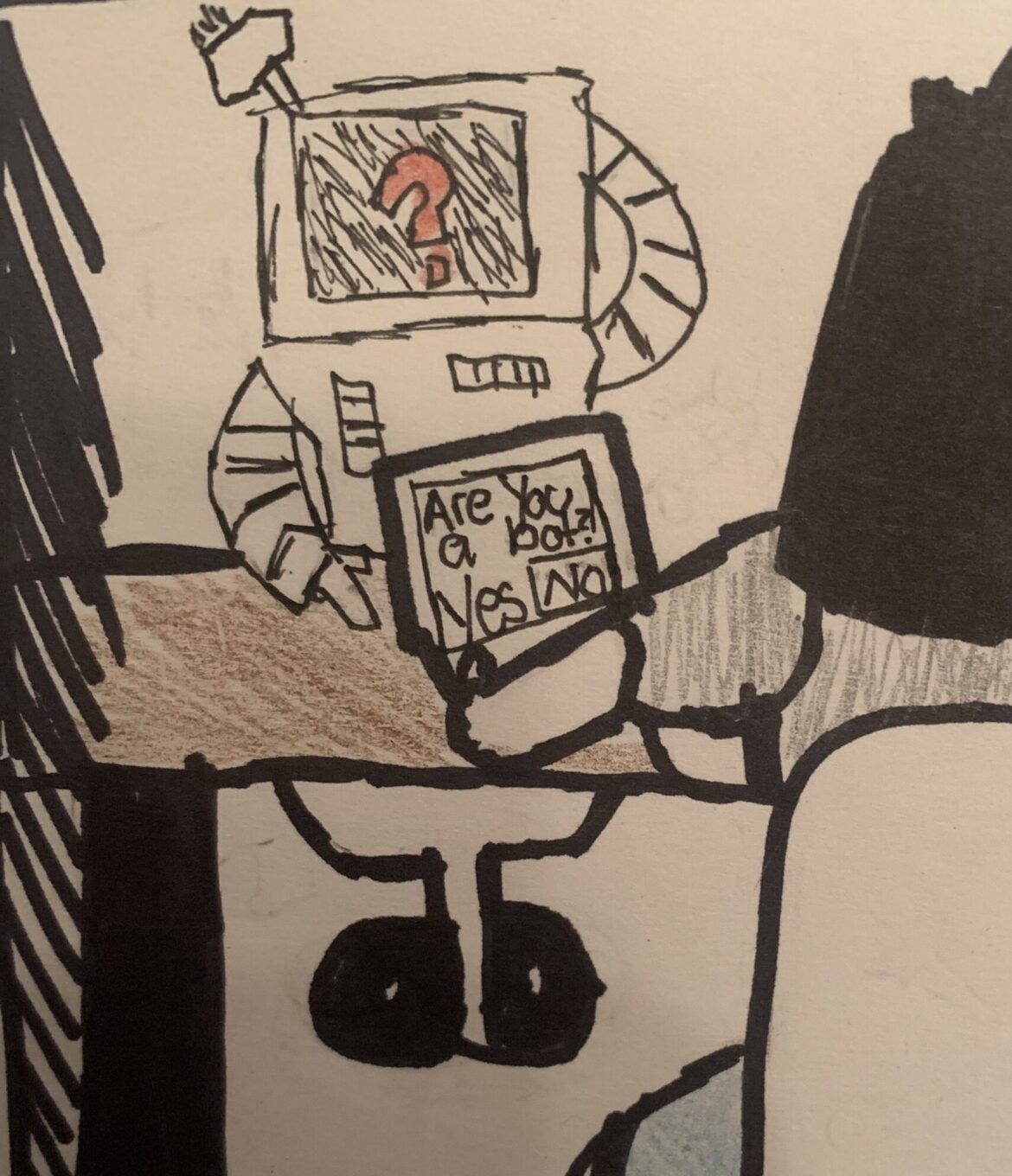Media Arts and Cinema Professor Steve Anderson has taught at Pierce College for 39 years. His classes are popular, and there is usually a wait list for each one of them.
Anderson’s late-start Cinema 107 class went live for the first time on Monday, March 18. He was grateful, as typically there are one or two students that are searching for them.
He took a look at the roster for the first time, and he was shocked to find that there were 30 students already enrolled in a matter of hours—29 who had the same major, were freshmen and had the same first four digits of their student IDs.
“There were a lot of red flags,” he said.
Anderson contacted Media Arts Department Chair Jill Connelly and Vice President for Student Services Jason Cifra to report the suspicious patterns.
The next morning, all the freshmen with the same major and sequential ID numbers were dropped.
By the next day, the nine “real” students turned into 40 students, and the class was full again.
This time, Cifra brought Acting Admissions and Records Senior Supervisor Henry Chang into the picture to complete a verification process.
Flash forward to Monday, March 25. Anderson’s class was full again. While he had 19 human students in his roster the day before, he requested a new verification process to remove bots again.
As the work to mitigate the bots infiltrating community college classes increases, faculty and staff across the Los Angeles Community College District are coping with the frustrating dilemma of trying to figure out who is real and who is a bot on their roster.
Bots have been a district-wide issue, and the bots are getting more and more sophisticated, going as far as submitting assignments, posting pictures and taking quizzes.
The fraudulent activity is self-perpetuating, and Anderson’s late-start cinema class is only one example from many others.

The classes being affected are asynchronous. To detect bots, professors look for signs such as inactivity and the failure to turn in assignments.
Anderson is frustrated, and does not know what to do.
“I feel terribly for the students that are trying to get into a class like mine, but they are being shut out and being forced to go on a wait list because the class is potentially full of fake registrations,” Anderson said.
Distance Education Coordinator Wendy Bass said all campuses are doing something about the bots, but they are being careful about what they are sharing about it, as they don’t want the bots to find out what is going on behind the scenes.
Even at the state level, how bots are handled is kept secret to avoid a hacker workaround.
While the situation is frustrating to professors and administration, the casualties of the bot scams are the students.
Interim President Ara Aguiar said she feels confident that gradually they will be able to somewhat control it.
“We have to be extremely careful that we don’t harm our students from being able to take a class,” Aguiar said.
Professors are struggling with the dilemma of whether to drop potential bots or not.
“I am also scared that if it is a real student and I drop them, they will be intimidated and won’t ask me why they were dropped,” Bass said. “A lot of students don’t feel comfortable talking to their instructors.”
Bass said instructors are encouraged to reach out to students to see what is going on before dropping them. But that puts a lot on faculty too, as sending emails all the time is not always easy.
She also said their goal is student success. As students, those struggling to sign up for a class are encouraged to reach out to professors whose classes are full.
“Reaching out and sending an email may be a good way to let the instructor know that this is a real student,” Bass said. “What is so frustrating is that our real students aren’t getting into the classes because the bots are taking up the spots.”
Aguiar said one element of the process they feel confident in is making phone calls and confirming the students are real people.
Aguiar also said there may be two-way authentication processes implemented to vet applicants, but that may hurt the chances of enrollment for people who lack a state identification.
“It’s a double edged sword, right? If you’re trying to authenticate individuals, but then you don’t want to be punitive to others that may not have the kind of documents that are being requested,” Aguiar said.
According to the San Francisco Chronicle article, “Thousands of ‘ghost students’ are applying to California colleges to steal financial aid. Here’s how,” from 2023, Pell grant money—the federal college subsidies for needy students—has long tempted fraudsters and became easier to steal when the U.S. Department of Education stopped verifying family income during the pandemic, a waiver expected to remain in place until the next award cycle.
According to the CalMatters article, “‘Getting significantly worse’: California community colleges are losing millions to financial aid fraud,” the California Community Colleges Chancellor’s office began requiring the state’s 116 community colleges to submit reports three years ago, after federal Pell grant fraud cases surged. The chancellor’s office suspected 25 percent of college applicants were fraudulent.
The CalMatters article also said the Academic Senate President at East Los Angeles College, Leticia Barajas, said in recent months that professors are forced to focus on hunting bots instead of teaching.
Barajas added that bots are evading detection, especially with the help of artificial intelligence.
Anderson is hopeful that the district will come up with new and powerful ways of defeating this breach, possibly with some sort of software.
Administration has been working to have a quick turnaround at removing bots.
Anderson said administration, like Connelly, Chang and Cifra, have been responsive, wonderful, compassionate and sympathetic.
“But I think the fraudsters are winning the battle at the moment, and it’s just not right,” Anderson said.




